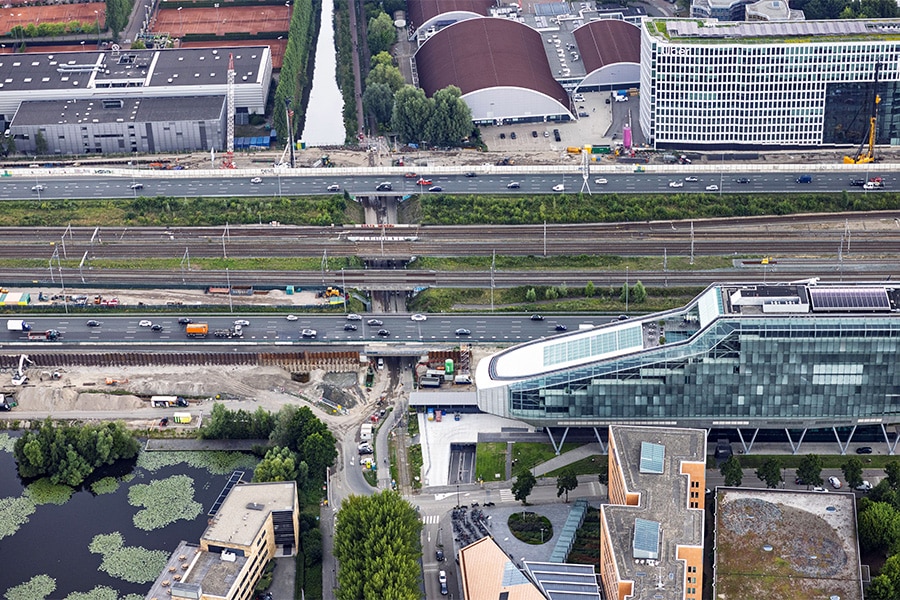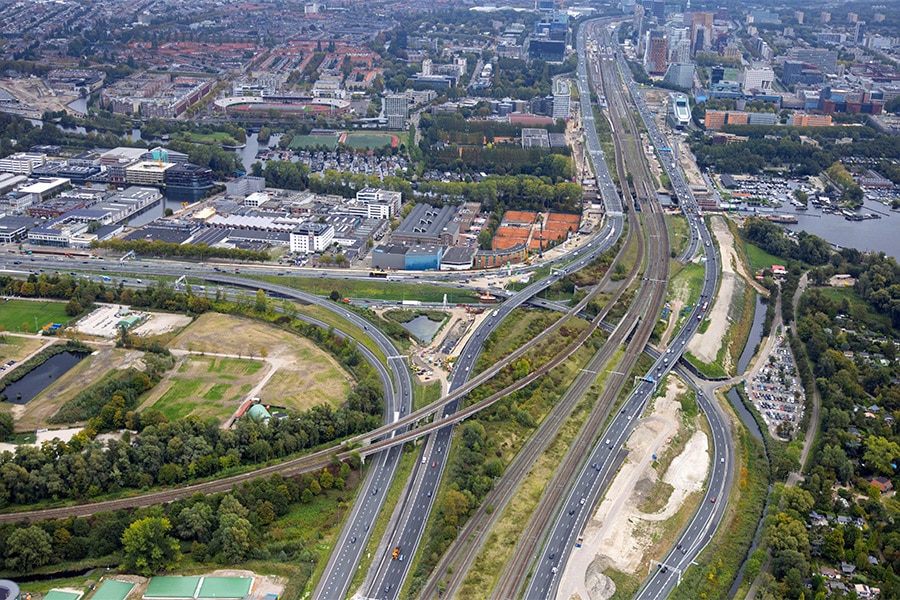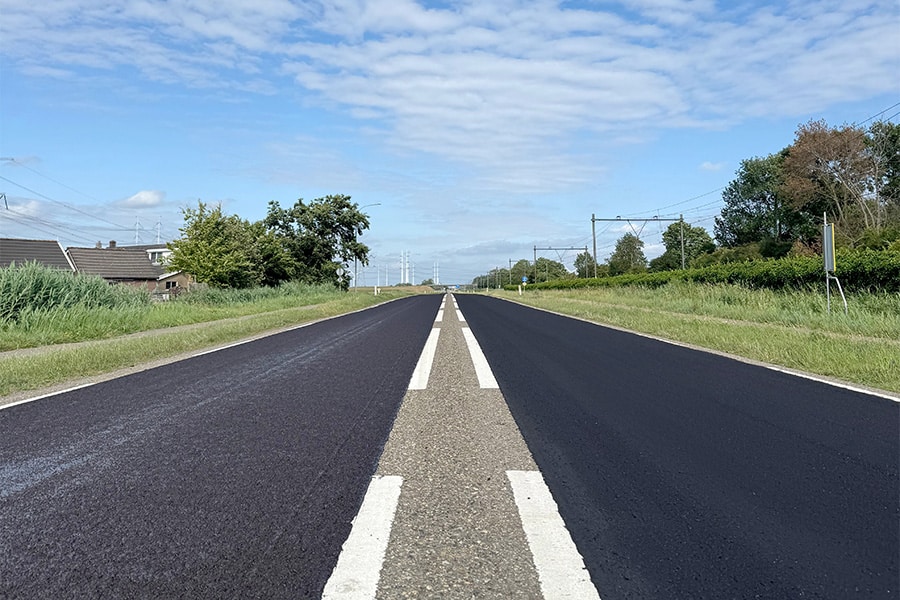
'Sand in, soil out!'
The A16 Rotterdam project, carried out by construction consortium De Groene Boog (which includes the companies Besix, Dura Vermeer, Van Oord, TBI (Mobilis, Croonwolter&dros), Rebel and John Laing), is the realization of 11 kilometers of new highway. It will be built partly high because of intersections with HSL, RandstadRail and the N471 and on soft, peaty ground.
Because of the high elevation and weak subsoil, it was necessary to pre-load the soil in the polder area around the road to be built. Much sand was also needed around the tunnel route, for the construction of construction roads. In total, we are talking about no less than 4,000,000 cubic meters of sand. An enormous amount. Where do you get so much sand? GWW Magazine asked Jan Span (project manager) and Jurian Bakker (environment manager) at De Groene Boog.
Sand from the North Sea and Markermeer
"With these quantities, the obvious thing to do is to extract sand from the North Sea," says Bakker, explaining, "However, the annulment of the Program Approach to Nitrogen (PAS) in May 2019 put a line under full sand extraction in the North Sea. As a result of the nitrogen issue and, for that reason, the lack of new permits for sand extraction in the North Sea, another solution was also sought. This was found on the Markermeer, where a current channel was created on the Markerwadden. The necessary freshwater sand could be extracted there. At a later stage, a small portion of sand was still extracted from the North Sea through an existing concession."
The decision to work partly with North Sea sand and partly with Markermeer sand was not determined by nitrogen problems alone, by the way. "The saltiness of this sand, which is used as a preload for the soil, would mean that the surface water would become too salty. That made us work in two parts. To obtain the water permit, one part, if desalinated, was allowed to be North Sea sand, the other part had to be freshwater sand per se. More than half of the total volume (4,000,000 cubic meters) of sand came from the Markermeer. So for this project the sand had to be extra desalinated, normally we talk about a chloride content of 200mg/kg, the standard for this project was 35mg/kg." The sand that came from the North Sea was extracted by hoppers and taken to an intermediate depot in the Scheurhaven. The dredger deposited the sand into barges, which then took it up the river to desalinate the sand while sailing." Span adds, "The sand was distributed to five transfer locations, namely in Nieuwerkerk aan den IJssel, at two locations on the Schie in Spaanse polder, in Schiedam and in the Keilehaven in Rotterdam.

'Almost no more beunschip to be found in the Netherlands'
The peak of sand extraction was last year, when between 90,000 and 100,000 cubic meters of sand per week found its way to the project. Span: "We needed a large part of the longboat market. At one point, we laid down a transshipment pontoon on the Markermeer, so that we could bring the sand to the project by dry cargo vessels instead of hopper barges." Bakker: "You can imagine how busy it was with transport by water and road. An average of 80 trucks drove 13 loads a day. That's equivalent to unloading about 25 barges a day." Span adds: "Then you're talking about about 20,000 cubic meters of sand per day."
Every 'club' its own unloading spot
The challenge for The Green Bow was also mainly in road transport. "After approval of the road transport plan, it turned out that for once the corona measures did not cause any inconvenience. We were driving outside rush hour anyway, and it was also quiet on the road because of the corona measures, so we could work very quickly and efficiently without too much inconvenience. We opted for a simultaneous working method, dividing the dumping into pools. Along the 11 km stretch, each 'club' had its own unloading point, complete with its own shovel. This allowed us to work in parallel," Span says.
Maximum reuse of soil from tunnel excavation
In addition to bringing in the immense amount of sand for the preload, the excavation of the tunnel also releases an enormous amount of soil. "As much as 700,000 cubic meters of soil," says Bakker. "We reused this soil to the maximum extent possible, for the cheeks (slopes). However, the excavated soil first had to dry sufficiently, in a specially designed soil depot. Part of the soil has been reserved for covering the tunnel, when all the concrete work is finished."
As with all other parts of project A16 Rotterdam, good coordination beforehand, tight planning and a flexible approach determine success. "If we look at the sand supply and soil removal, we can safely say that we did titanic work," Span concluded. "Jurian and I are proud that by working well as a team, across the board, a record was broken when it comes to sand moving."




